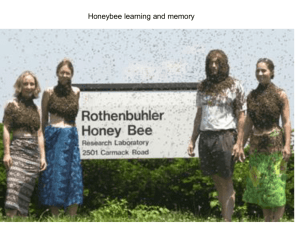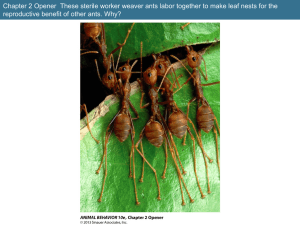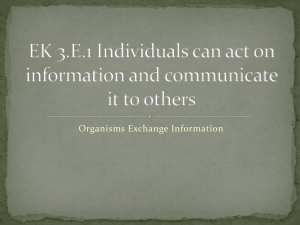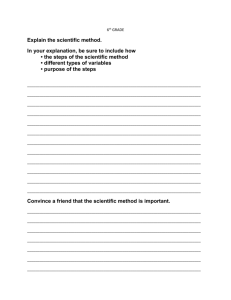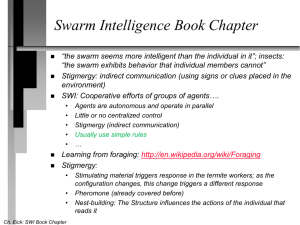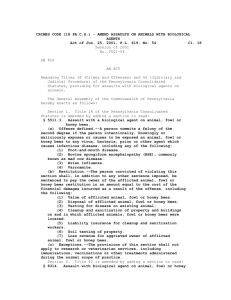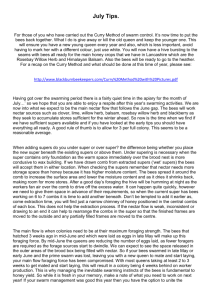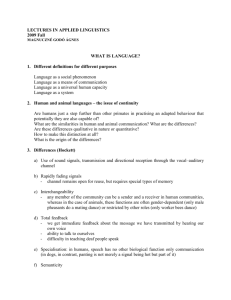Chapter 7F
advertisement
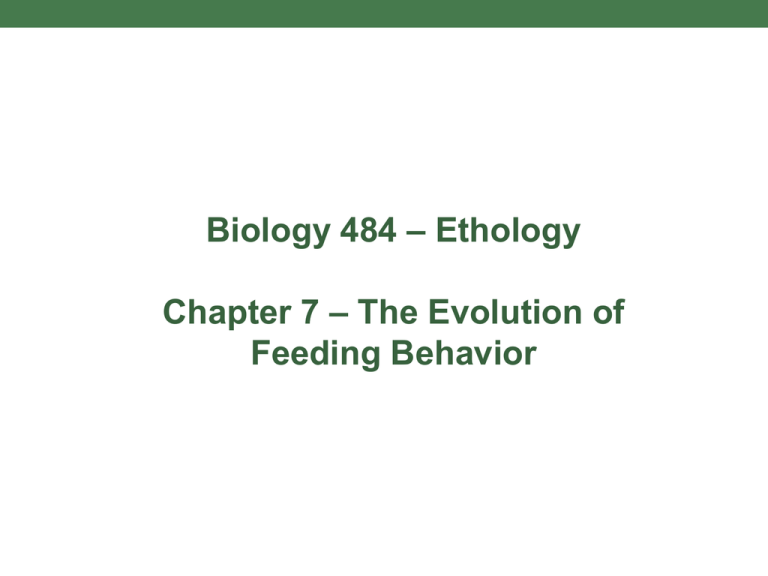
Biology 484 – Ethology Chapter 7 – The Evolution of Feeding Behavior Chapter 7 Opener: A bullfrog has many dietary choices to make Many choices may go into what types of food an animal eats: • Caloric needs • Other nutrient needs • Availability issues • Risks associated with certain foods (location, etc) • And many others The Common Whelk (or Snail) 7.1 Optimal foraging decisions by northwestern crows when feeding on whelks The Crow has been studied and show to obtain the maximum cost/benefit ratio from dropping the snails at a height of roughly 5 meters. 7.2 Available prey versus prey selected Why would they not preferentially select only the LARGEST mussels? 7.3 Two optimal foraging models yield different predictions These two competing models suggest vastly different outcomes. In A, the model is looking at calories and time spent opening the snail, whereas model B adds in the potential loss acured when a mussel is so large that there is a significant possibility the bird’s dropping efforts will not be successful. 7.5 A foraging bout by the red knot Time line showing how the bird will select to move to another foraging spot. 7.6 Young garden skinks lower their foraging success in order to reduce the risk of predation Feeding behavior can be influenced by other risks, such as that of predation pressures. In this case, it is snake scent. On the right graph, the “wood block” category is an environment that allows hiding places for the skink. This is an image of the phorid fly on the left. On the right is the end result of an attack on a fire ant, the main food item of this fly. 7.7 Foraging efficiency is compromised when the risk of predation is high The forager ant is preyed upon by the phorid fly. But the phorid fly will only consume insects with a head size of 1.8 mm or greater. Hence, during predation times, the forager ant only sends out smaller (less efficient foragers). 7.8 Records of energy consumption in relation to trotting (red line) versus galloping (green line) Look for the efficiency of trotting versus galloping. In each the actual transition time is at the point of greatest efficiency in trotting. How might you explain these data? 7.9 How can two hereditary phenotypes coexist in the same population? 7.10 Two hereditary forms of an African cichlid fish Because their phenotype differs, the two forms do not compete for resources. 7.11 The results of frequency-dependent selection in Perissodus microlepis Look at how the actual percentage of the individuals hovers consistently around a 1:1 ratio of left jawed and right jawed fish. 7.14 Web ornament of an orb-weaving spider Web ornamentation is seen in the more reflective regions (the zigzag patterns) seen in this web. 7.15 Do web ornaments lure prey? 7.17 A cost of conspicuous web decorations? 7.19 The antimicrobial properties of the major spices 7.20 Clay eating has evolved in several species of parrots Clay eating is useful for dissipating toxins the birds consume. 7.21 Round dance of honey bees 7.22 Waggle dance of honey bees (Part 1) 7.22 Waggle dance of honey bees (Part 2) In a dark environment, like inside the hive… or anytime the sun is not present, orientation will be against the vertical. 7.23 Testing directional and distance communication by honey bees (Part 1) Test by von Frisch examining ability to learn direction from the dance in bees. Most new foargers correctly went to the feeding station the dancer oriented them to with her dance. 7.23 Testing directional and distance communication by honey bees (Part 2) A similar test by von Frisch used to test the communication of distance by the dance language in bees. 7.24 Honey bee recruits really do “read” the symbolic information in dances The “blue” bees were trained to think the food source was 70 meters away. 7.26 The adaptive value of the dance communication system (Part 3) Note especially how the bees in the winter benefit especially in enviornments with oriented (unipolarized) light.

